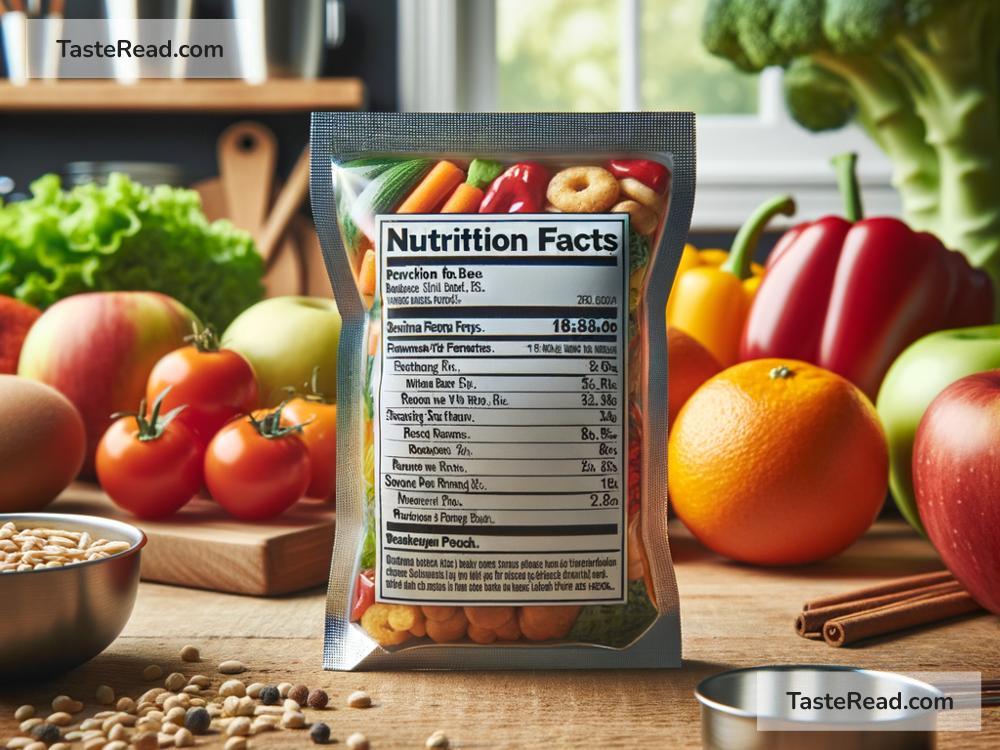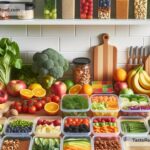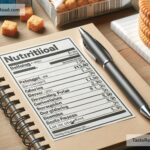How to Read and Understand Nutrition Facts Panels in Simple English
If you’ve ever looked at the back of a food package, chances are you’ve seen the Nutrition Facts panel. This label is like a cheat sheet for understanding what’s inside the food you’re eating. Knowing how to read it can help you make healthier food choices, manage your diet, and keep track of important nutrients like calories, fats, and vitamins. But for many people, those tiny boxes and numbers can seem overwhelming. Don’t worry—we’re here to break it down in simple English so you’ll know what to look for next time you’re at the grocery store.
Step 1: Serving Size
The first thing you should check on the Nutrition Facts panel is the serving size. This is the amount of food the numbers on the panel are based on. For example, a bag of chips might say the serving size is “1 ounce (about 15 chips).” If you eat 30 chips instead of 15, you’re actually eating two servings, which means all the numbers (like calories and fat) need to be doubled!
Most people overlook the serving size, but it’s super important. It gives you a clear idea of how much you should eat if you want to follow the label’s guidance. If the serving looks much smaller than what you normally eat in one sitting, you’ll need to adjust the numbers.
Step 2: Calories
Next, look at calories. Calories measure how much energy the food provides. If you’re trying to maintain, lose, or gain weight, understanding calories is key. For example:
- Eating more calories than your body uses can lead to weight gain.
- Eating fewer calories than your body needs can lead to weight loss.
Let’s say a serving of granola has 200 calories. If you eat two servings, you’re consuming 400 calories, not 200! Always check the serving size first to make sure you’re counting calories correctly.
Step 3: Nutrients to Limit
The next section of the Nutrition Facts panel includes nutrients you may want to limit in your diet, such as:
- Total Fat: This number tells you how much fat is in one serving of the food. Pay attention to the types of fat listed:
- Saturated fat and trans fat are considered less healthy. Too much of these can increase your risk of heart disease.
- Unsaturated fat, like the kind found in nuts and avocados, is healthier.
Some foods (like fried snacks) might look okay calorie-wise but have high amounts of saturated fat, so make sure to check this!
-
Cholesterol: Foods with high cholesterol can impact your heart health if you eat too much, so if you’re watching your heart health, keep an eye on this number.
-
Sodium: Sodium is just a fancy word for salt. Too much sodium can lead to high blood pressure and bloating. Many processed foods (like soups, frozen dinners, and snacks) can be sneakily high in sodium, so this is an important number to check.
Step 4: Nutrients to Focus On
Below the “nutrients to limit” section, you’ll find nutrients your body needs more of, such as:
-
Dietary Fiber: Fiber is great for digestion and can help you feel full longer. Foods high in fiber include fruits, vegetables, and whole grains.
-
Protein: Protein helps build muscles and keeps your body functioning. If you’re active or growing (like children and teens), protein is especially important.
-
Vitamins and Minerals: Nutrition panels often list vitamins like Vitamin D and minerals like calcium, iron, and potassium. These are essential for your overall health—Calcium is good for strong bones, iron helps your body carry oxygen, and potassium supports heart health.
Step 5: % Daily Value
The % Daily Value (%DV) tells you how much of each nutrient is in one serving compared to how much most people need in a day. For example:
- If a food has 20% DV for calcium, that means one serving gives you 20% of your daily calcium needs.
Keep in mind:
– 5% DV or less: Means the food is low in that nutrient.
– 20% DV or more: Means the food is high in that nutrient.
This helps you quickly spot whether a food is a good source of something you need (like fiber or protein) or something you should limit (like saturated fat or sodium).
Step 6: Ingredient List
At the bottom or side of the food packaging, you’ll see an ingredient list. This tells you what’s actually in the food, listed in order of how much is used, from the most to the least. For example, if the first ingredient is “sugar,” you know sugar makes up a big part of the food.
If you’re trying to eat healthier, look for foods with shorter ingredient lists and items you recognize. Whole foods like fruits, vegetables, whole grains, and lean proteins are usually better choices.
Step 7: Compare Products
Finally, try comparing different products using their Nutrition Facts panels. For example, if you’re choosing between two types of yogurt:
- One might be lower in calories but higher in sugar.
- The other might be a better source of protein but higher in fat.
By comparing labels, you can find the food that fits your needs the best.
Final Thoughts
Learning to read and understand Nutrition Facts panels doesn’t have to be complicated. By focusing on serving size, calories, nutrients to limit, nutrients to prioritize, and the % Daily Value, you can make smarter, healthier choices every day.
Next time you’re shopping, take a closer look at the labels and start practicing. The more you do it, the easier it gets. Making informed decisions about your food is one of the best ways to take control of your health, one meal at a time!


